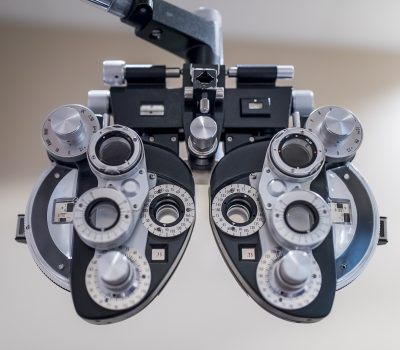What are cataracts and how are they treated?

Cataract is a condition when the clear lens of the eye becomes clouded. The symptoms can include cloudy/hazy vision, as well as an increased sensitivity to bright lights and glare.
Other signs that you may notice when you have cataracts are difficulty reading in dim light, or finding it a challenge to drive at night. No further improvement in vision inspite of frequent change your glasses prescription may also indicate that you are developing cataracts.
As cataracts are most often the consequence of ageing (although other medical conditions, such as diabetes and smoking, can also play a role), they affect a significant proportion of the population — around 700,000 people in Australia, according to some estimates. They generally develop in both eyes at the same time, but it is often the case that the condition will be more advanced in one eye than the other.
People who suffer from cataracts can experience a significant deterioration in their quality of life. In particular, as a majority of people with cataracts will likely be over 60 years of age, there is an increased risk of falls as a result of impaired vision, and this can ultimately impact on the ability to live independently.
If you have cataracts, your GP will refer you to an eye specialist in Adelaide, and it is likely that you will need to undergo cataract surgery in order to have them removed. A referral does not necessarily mean that eye surgery is urgent and you may be able to function perfectly well for an extended period of time before cataract surgery is required.
Nevertheless, once cataracts have started to develop, in all likelihood a cataract surgeon will need to remove them at some stage.
Are there different types of cataracts?
There are three different types of cataracts, and they are generally classified by ophthalmologists according to the part of the lens in which they appear.
Nuclear sclerotic cataract
This the most common type of cataract and affects the nucleus, or the central part of the natural lens, which hardens and turns yellow. In some cases, this may lead to a temporary improvement in close-up vision as the eye’s ability to focus changes, but eventually there is a gradual deterioration in the overall quality of vision, a process which can extend over many years.
Cortical cataract
This variety of cataract is less common. The outer part of the natural lens, known as the cortex, becomes cloudy and develops ‘spokes’ that point in towards the centre. The most common symptom associated with this form of cataract is glare that impacts significantly on the ability to see clearly, while depth perception may also be affected.
Posterior subcapsular cataract
This variety of cataract produces opacity on the back surface of the natural lens. The symptoms, which can develop quite quickly, include excessive sensitivity to light, as well as difficulties with glare (e.g.,seeing a ‘halo’ effect around objects) and reading. This is the form of cataract that people with diabetes are most likely to suffer from, as well as anyone who has used corticosteroids for extended periods of time.
What does cataract surgery involve?
If you are suffering from any of these types of cataracts, the solution to regaining clear vision is to consult a Cataract Surgeon in order to undergo surgery.
Cataract surgery is a minimally invasive procedure that can usually be performed as day surgery under local anaesthetic. The procedure can generally be performed on patients of any age, and it is unlikely that a co-existing medical condition will prevent eye surgery from being able to take place.
During cataract surgery, the clouded lens is removed through a tiny incision on the surface of the eye (the cornea). A clear lens implant (known as an intraocular lens or IOL) is then inserted in its place through the same incision. This lens, which is made from plastic, then performs the same function as the natural lens, and there are both monofocal and multifocal IOL options available. The IOL lens stays in place permanently and there is no deterioration over time.
Cataract surgery is most commonly performed eye surgery and most patients have improved vision soon after. The procedure may also correct other conditions that impact on eyesight, and some glasses wearers may find that they no longer require them after cataract surgery. Most people can resume normal activities within a few days, and full recovery will usually take between 4 to 6 weeks.
In cases where both eyes require surgery, they will be operated on separately, usually a few weeks apart. After surgery, cataracts do not generally return and so the procedure will normally only need to be undertaken once for each eye.
Talk to an Adelaide Eye Specialist to find out more
Dr Swati Sinkar is a highly experienced Ophthalmologist who is widely regarded as one of the leading eye specialists in Adelaide. Dr Swati consults at Eyemedics (Wayville), Kingswood Eye Centre, Salisbury Eye Clinic and Mount Gambier Eye Specialists.
In order to see Dr Sinkar you will first need a referral from your GP. Once you have this, you can then arrange an appointment directly with any of the clinics at which she consults (your GP or optometrist may do this on your behalf), or you can email to find out more.



